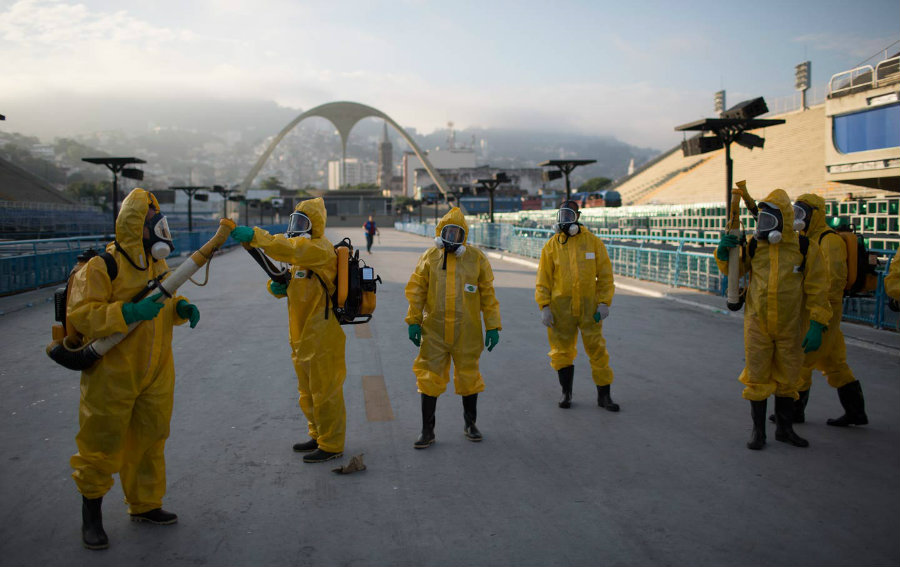In their fight against Zika, mosquito control officials are killing millions of honeybees. Only last week, Juanita Stanley, a South Carolina beekeeper, denounced that more than three million of her bees died. These bees comprised her entire livelihood and died when Summerville officials sprayed her town against Zika-carrying mosquitoes.
Usually, officials spray for mosquito control by truck and at night, when bees are in their hives and beekeepers can better protect them. But this time, the county decided to spray aerially, just after sunrise on Sunday. According to Stanley, even though her property is surrounded by “no spraying” signs, they still sprayed, killing her beehives.

“Stop. This is crazy. It’s like using a sledgehammer to crack a peanut. The devastation that it has already caused is beyond comprehension. We can’t live without these honeybees” said Stanley. Jason Ward, Dorchester County Administrator, has stated the spraying happened because four people in the county were already infected, worrying residents.
Zika paranoia in South Carolina
However, Zika is not circulating in South Carolina in an “active” way. This means that of all forty-six registered cases, only one was locally transmitted, and it was so through sexual relations. The rest, are “imported” from travelling to parts with active Zika circulation. So far, in the United States, the only state with active transmission is Florida, and is only located in the Miami and Tampa areas.
Nonetheless, the Aedes aegypti, the primary mosquito that carries the virus, alongside yellow fever, dengue, and chikungunya has appeared in the Charleston area, very near to Stanley’s home. As such, Ward says the spraying was necessary, since the county has many areas full of standing water thanks to the flood that occurred last October, and “the health of our citizens is of primary concern.”
This is a contradiction to what the South Carolina’s Department of Health and Environmental had stated on April this year when a press release read “there is no risk to public health and no risk of transmission to people or mosquitoes in South Carolina at this time.” Stanley agrees with the Health and Environmental Department.
According to Stanley is crazy and illogical to “go kill everything” in case someone might eventually get Zika. The NBC reached out to the Centers for Disease Control and Prevention, which claimed that the spraying should be done whether the Zika cases are travel-associated or locally transmitted, as long as the A. aegypti is found in the area, since it is a way to prevent the disease to “take hold” in the local mosquitoes.
Both the National Bee Laboratory and the National Institute of Food and Agriculture refused to comment on the issue.

The honeybee crisis
For the last decade, millions of bees all over the world have been dying. This is particularly the case for American bees, which have been killed by the pest control methods. Jeffrey Harris, an entomologist who runs the Honey Bee Extension and Research Program for Mississippi State University, has declared that “human health” will always going to be more important for government than “bee health”, and as such, if a dangerous mosquito population grows, “they are going to spray.”
Harris is currently researching how to best protect bees against pesticides. So far, aerial spraying is the worst method, since the recommended spray is at dawn, when the bees are already out from their beehives. Spraying at night is not always possible. For example, according to Michael Doyle, who runs the Key West Mosquito Control District, in Key West is impossible since there is not any light to guide the plane, because most of the flight is done over water.
At the same time, both the Centers for Disease Control and Prevention and Doyle agree that the pesticide used aerially is so small, that the wind sweeps it very quickly, making impossible for beekeepers to protect beehives. According to the Center, the pesticide droplets are “15 to 25 microns in size, much less than the diameter of the human hair,” made specifically to attack the tiny mosquitoes.
However, one recommendation for beekeepers is to dump a breathable fabric and place it over the hive before the aerial spraying begans. This way, many of the droplets will be caught in the fabric without suffocating the honeybees. This is also helpful when the bees from what beekeepers call a “beard.”
“Sometimes, a half of pound of bees will be hanging out together in a ‘beard’ outside their hives in the late afternoon, and they often stay there into the night. We suggest getting wet burlap bags and hanging them over the hives so that the hive or the beard can’t escape. The fabric picks up much of the pesticide and protects them” said Harris.
More communication between beekeepers and mosquito control officials is necessary
However, the relationship between the mosquito control officials and the beekeepers is really frail. For one, this means that all beekeepers must register with their local mosquito control districts, as to be warned of potential aerial spraying. The problem relies in the fact that beekeepers are very secretive about their beehives, preferring not to disclose their location, as is a way to keep the best flowers hid from other beekeepers.
“It’s a Catch-22. They don’t tell us where they are, but then we get blamed for killing bees” says Doyle. However, Stanley disagrees.
She says she is indeed registered in her local mosquito control district, but nobody called her beforehand to warn her about the spraying. Apparently, the mosquito officials have apologized, but that is simply no enough for a woman who invested all her resources in a business and lost it all at once.
Sources: NBC
